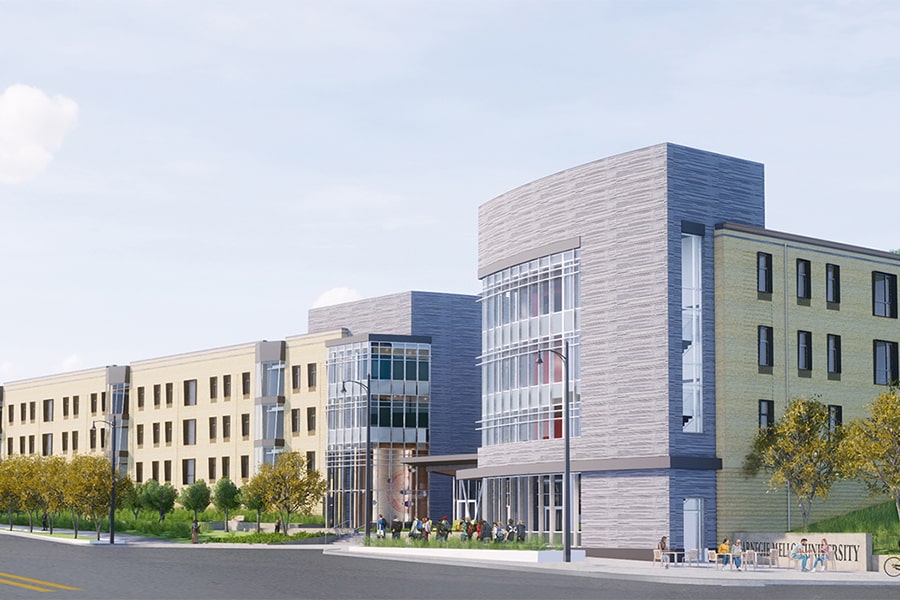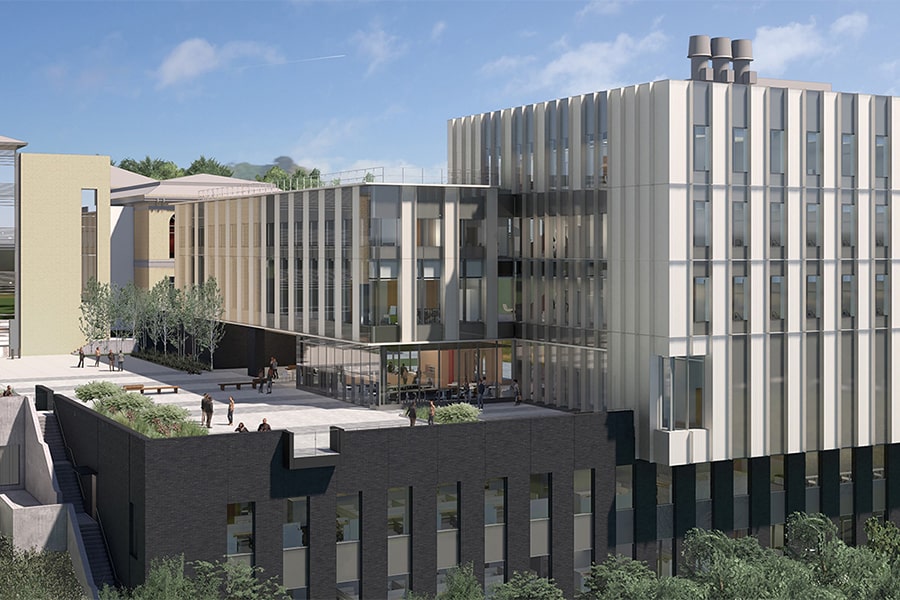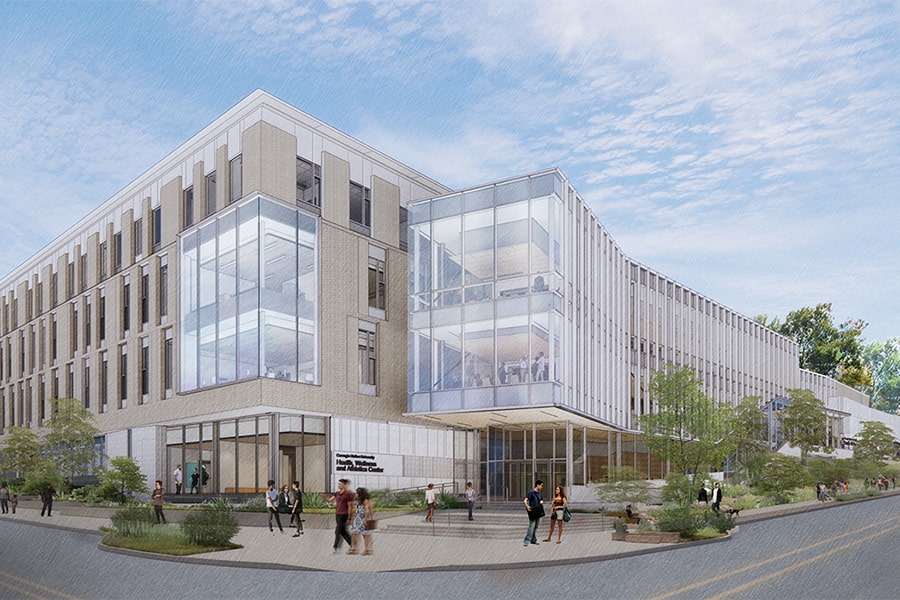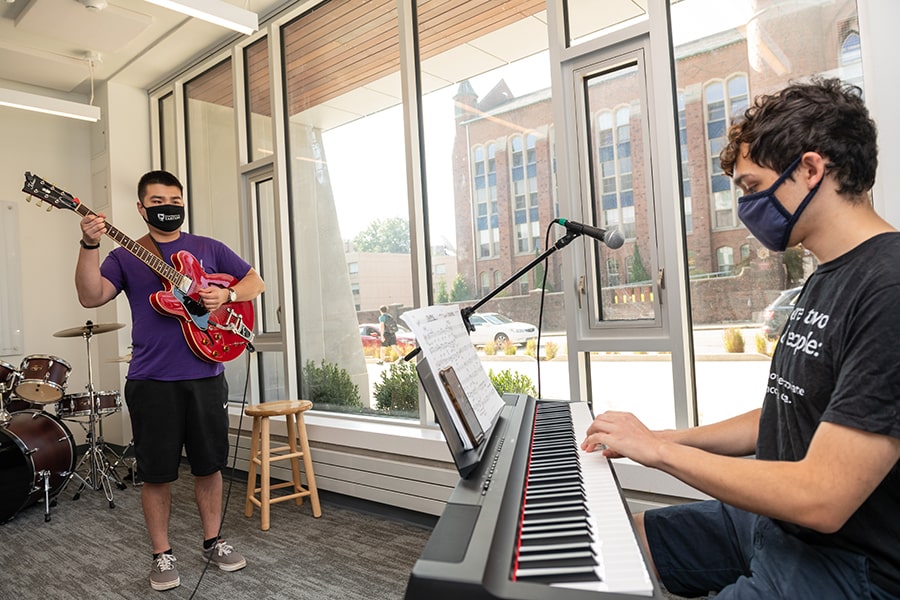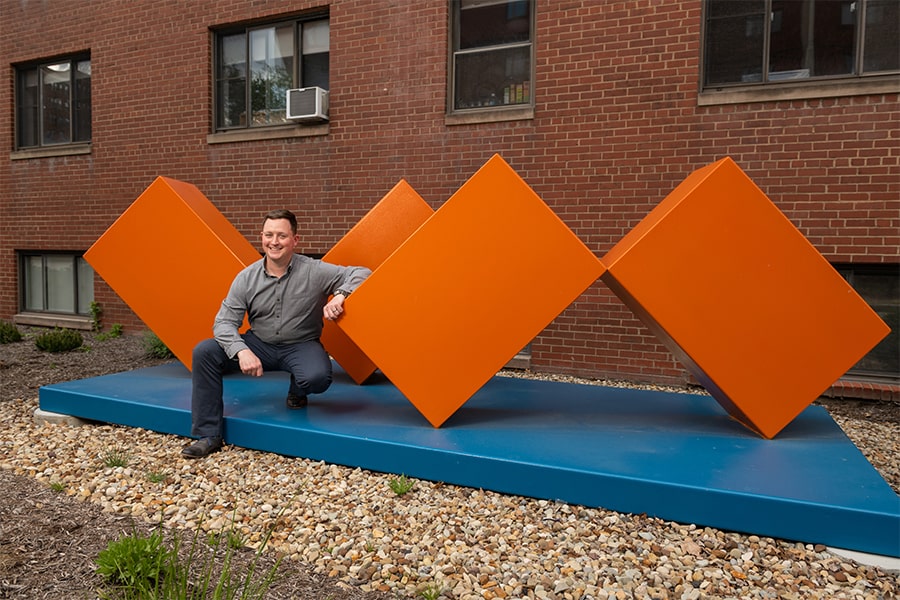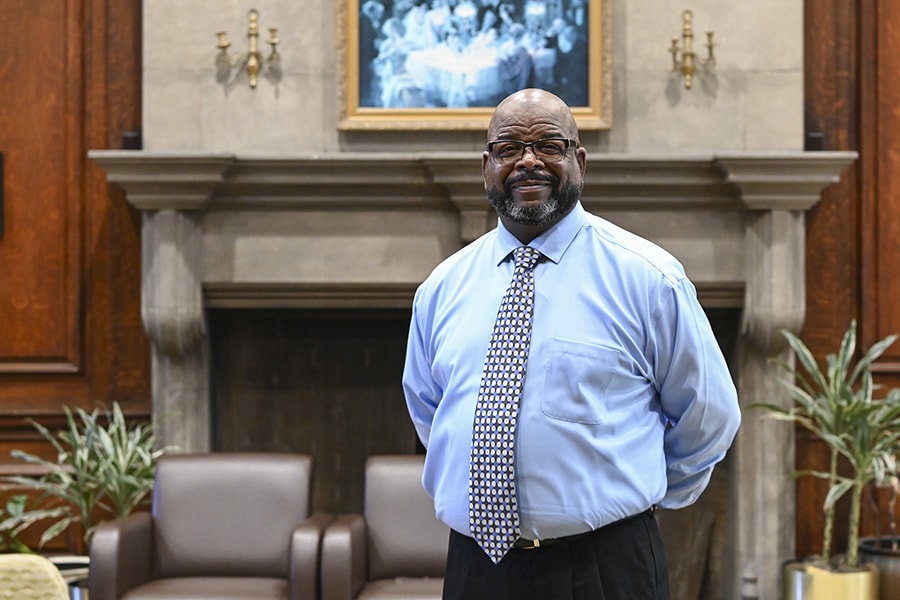Designing the Campus of Tomorrow
By Kelly Saavedra
It’s not a crystal ball, but you can get a glimpse of what campus might be like in the future by looking into the Institutional Master Plan.
City of Pittsburgh Zoning Code requires Carnegie Mellon University and all other institutions located in an educational/medical district to submit an update of their Institutional Master Plan (IMP) every 10 years. IMPs provide an individualized 10-year development framework for each institution that includes plans and standards for such things as new buildings, parking, urban design and neighborhood compatibility.
Bob Reppe, the university’s senior director of planning and design, led a Town Hall recently with other Campus Design and Facility Development (CDFD) staff to present the highlights of the plan to the campus community.
“It’s important to note that while we are required to do this every 10 years for the city, the document is also very much an aspirational one. In other words, it’s our long-range vision for the university,” Reppe said.
CMU held a virtual Town Hall on April 28 to discuss the 2022 Institutional Master Plan and current and future construction projects.
Guided by a high-level advisory team of senior leadership, trustees, faculty and staff, CDFD has reached out broadly to both the campus and neighboring communities for input. Development, mobility, infrastructure and neighborhood enhancement projects in the plan support the university’s mission and core values and advance the goals of Carnegie Mellon’s Strategic Plan.
“When we think in terms of long-range, one of the things we talk about are the key principles that are really important to us as a university,” Reppe said. “And so, we developed these 12 master planning principles, which really became the bedrock upon which the entire document is based.”
The key principles encompass such priorities as the connection of the designs to Carnegie Mellon’s values, timeless buildings, the creation of a memorable campus experience and a lively campus lifestyle, which takes into consideration how people get around campus.
“Context is really important, the notion that we are not a university that is isolated out in some field somewhere but that we are part of the urban context of the City of Pittsburgh,” Reppe said. “We have neighbors we work with. We’re adjacent to Schenley Park, which is an incredible asset, and we have Craig Street to consider. And there’s this notion of opportunity, in that we don’t exactly know what the future will be like. So, we want to use all our assets to the best of our abilities, but we also want a master plan that can respond to a dynamic future.”
"We want to use all our assets to the best of our abilities, but we also want a master plan that can respond to a dynamic future."
— Bob Reppe
Other university priorities discussed during the Town Hall included increasing instructional and research space now that the campus community has grown to around 20,000 people and adding new student housing with improved amenities and greater occupancy in a variety of on-campus living environments.
And while Forbes Avenue was for many years the edge of the university, Carnegie Mellon’s growth over the past decade has turned the roadway into more of a campus spine and critical connector to new facilities. Therefore, the plan also proposes significant development along Forbes Avenue to support academics and research, the student experience and engagement with the greater Pittsburgh community.
Ralph Horgan, associate vice president of CDFD, described the IMP in this way:
“The potential developments proposed in the Institutional Master Plan would be state-of-the art facilities that support the academic and research pursuits of the Carnegie Mellon community, enhance the student residential experience and contribute to the economic growth and quality of life in the Pittsburgh region,” he said. “The projects will also contribute to the well-being of those living, studying, working on, or visiting campus, and to the residents of the surrounding communities by being well-designed legacy buildings that are universally accessible and environmentally responsible.”
In addition to discussing the master plan, the Town Hall featured project updates by several CDFD staff:
- Alan Magee Scaife Hall, presented by Jamison Fielding;
- Forbes/Beeler Residence Hall, presented by Jan Held and Salonika Garapaty;
- Highmark Center for Health, Wellness & Athletics, presented by Utkarsh Ghildyal and Joe Yimin;
- Hazelwood Green Robotics Innovation Center, presented by Adam DiMenno;
- Richard K. Mellon Science Building, presented by Jamison Fielding; and
- Hamerschlag House Renovations & Commons, presented by Jennifer Beck.
Beck, project manager for CDFD, suggested viewers imagine looking down The Cut toward Forbes Avenue and picturing a changed landscape, improved housing for fraternities and sororities, more campus seating, especially around the tennis courts, and greater connections to Craig Street.
With a focus on mobility, sustainability and neighborhood enhancement, CDFD staff discussed other ideas the university is considering, such as:
- potentially widening the Forbes Avenue Junction Hollow Bridge;
- integrating bus routes into the campus network;
- adding more bicycle amenities;
- working with partners on shuttle buses;
- working with the city and the parks to improve the campus entry from Schenley Park;
- possibly making Frew Street one way, and
- potentially creating a ramp from Hunt Library to Flagstaff Hill that leads to an overlook.
For an in-depth look at the Institutional Master Plan, visit the CDFD website or download the document [pdf]. If you have ideas for additions to the master plan, email cmu2022imp@andrew.cmu.edu.

